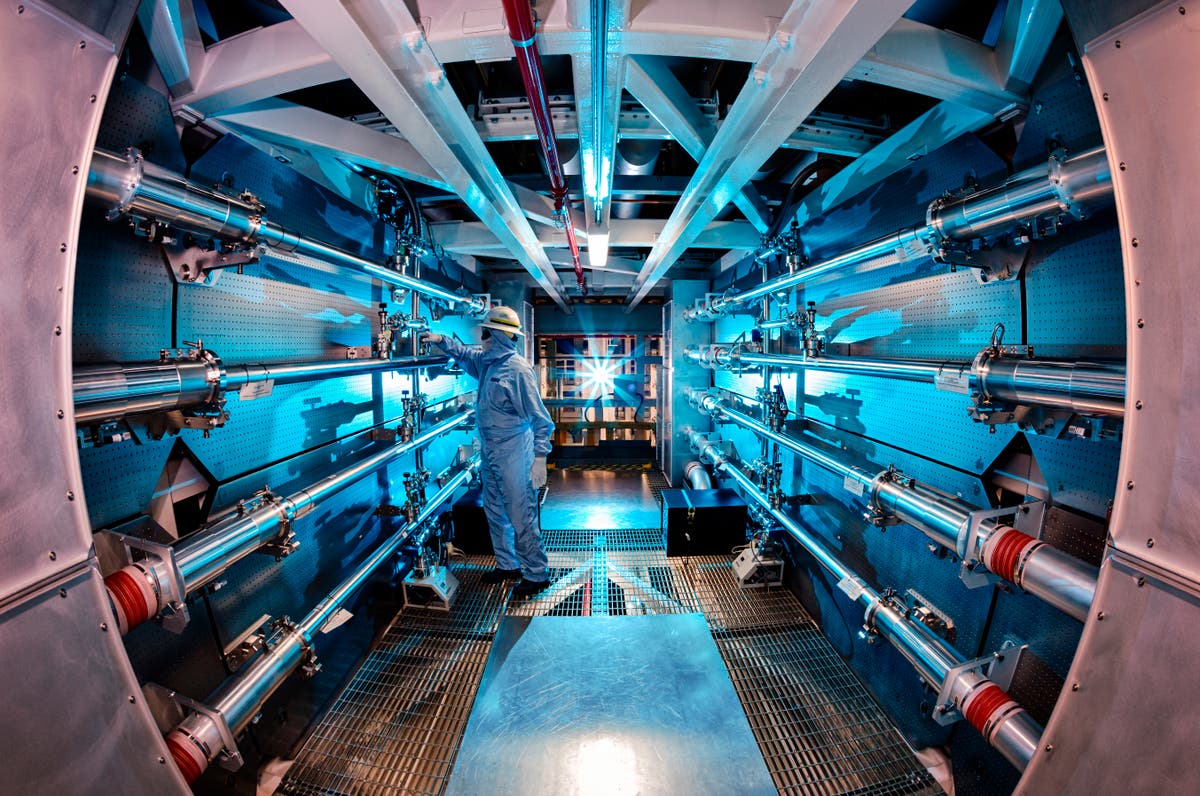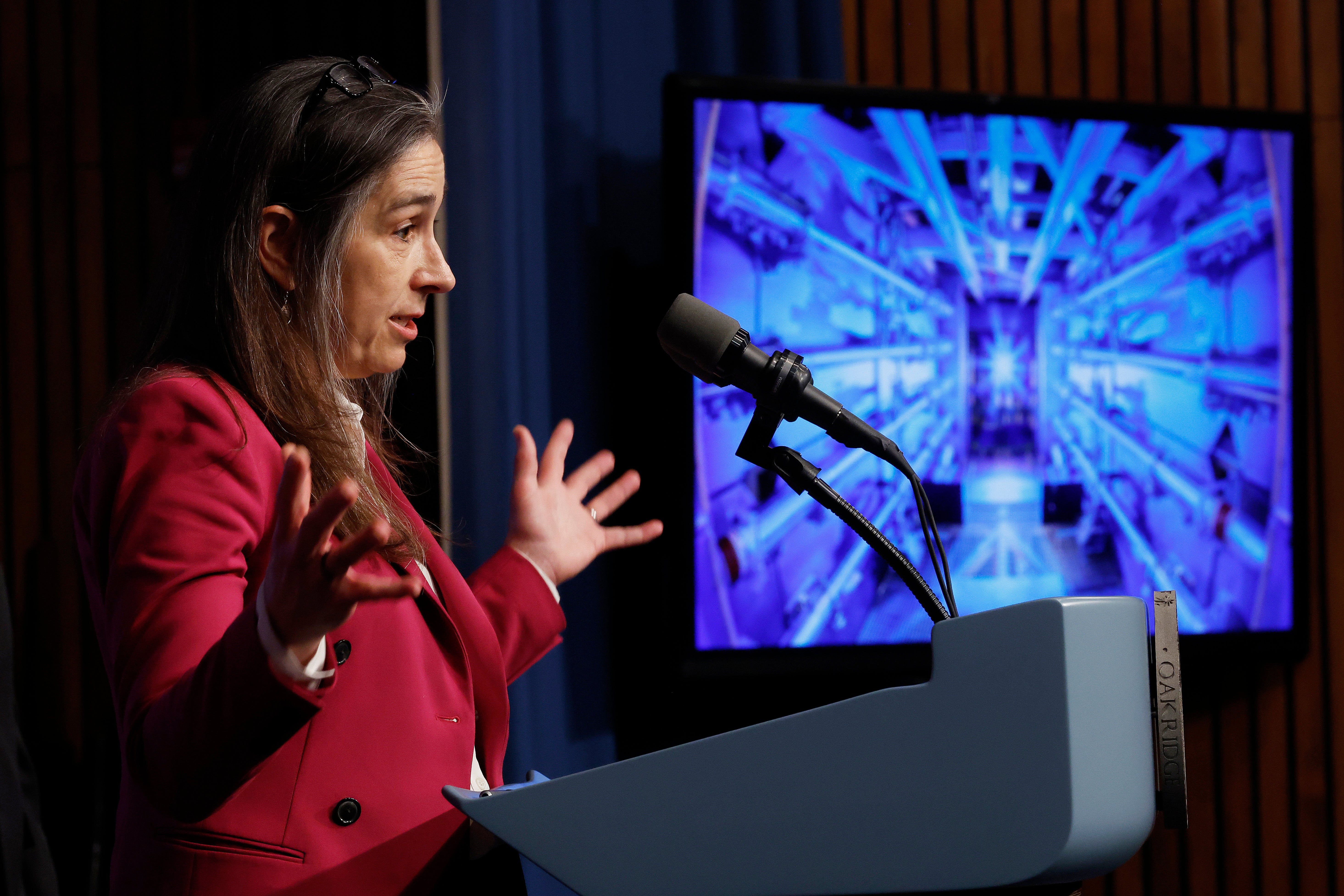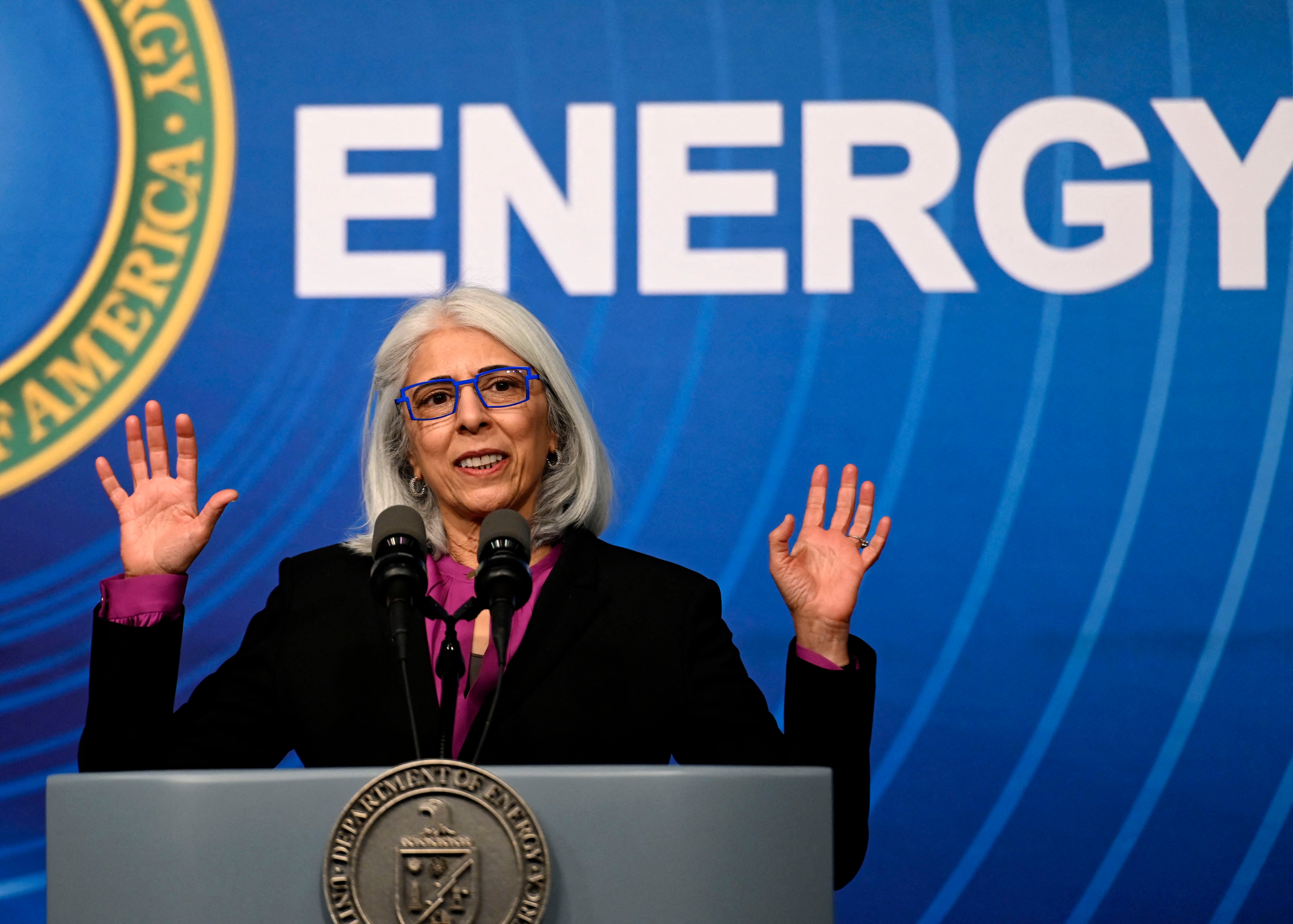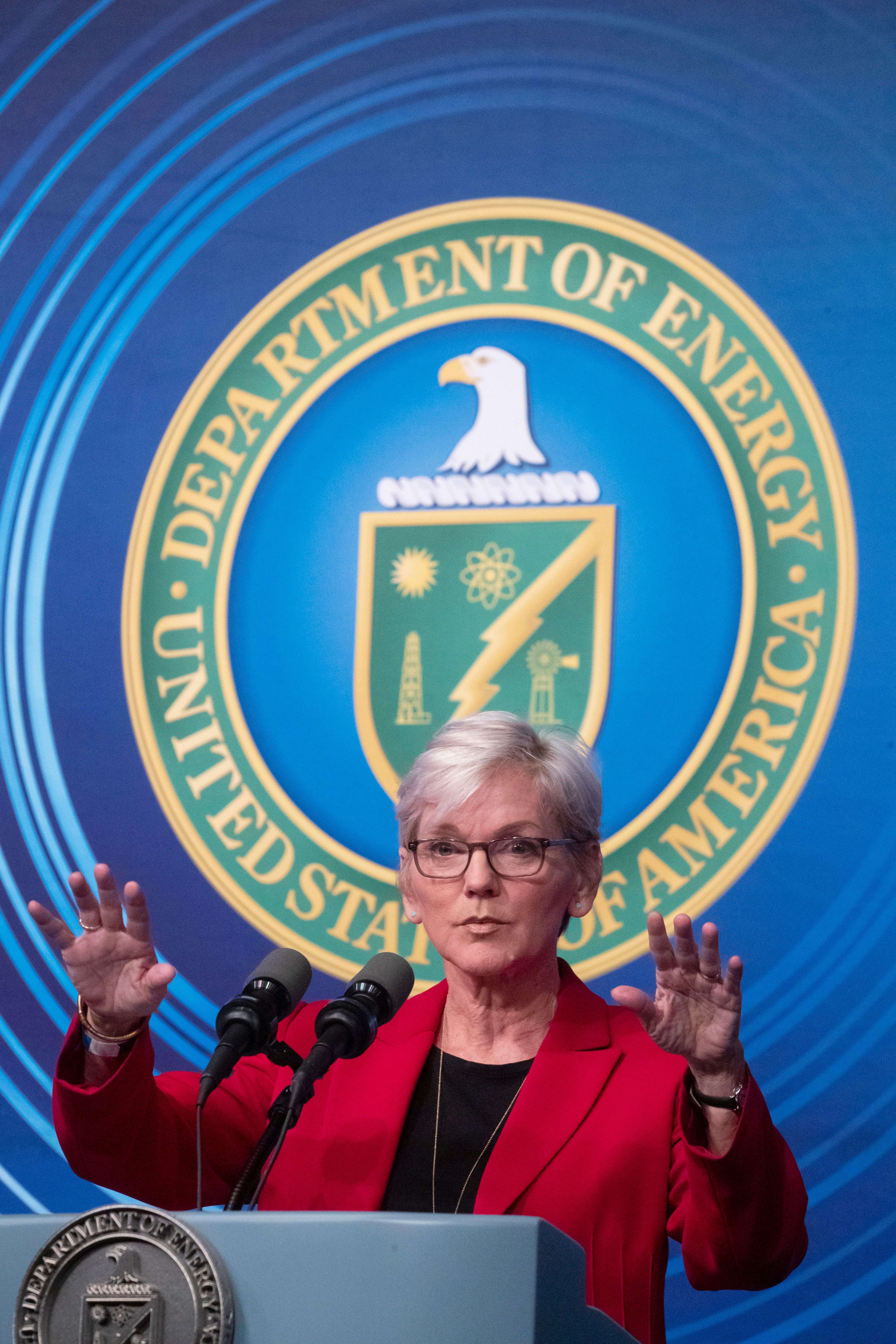Nuclear fusion – live: Scientists announce major ‘limitless clean energy’ breakthrough
‘This is game-changing, world-improving, lives-saving history unfolding in real-time,’ Energy Secretary Jennifer Granholm says
Your support helps us to tell the story
From reproductive rights to climate change to Big Tech, The Independent is on the ground when the story is developing. Whether it's investigating the financials of Elon Musk's pro-Trump PAC or producing our latest documentary, 'The A Word', which shines a light on the American women fighting for reproductive rights, we know how important it is to parse out the facts from the messaging.
At such a critical moment in US history, we need reporters on the ground. Your donation allows us to keep sending journalists to speak to both sides of the story.
The Independent is trusted by Americans across the entire political spectrum. And unlike many other quality news outlets, we choose not to lock Americans out of our reporting and analysis with paywalls. We believe quality journalism should be available to everyone, paid for by those who can afford it.
Your support makes all the difference.The United States has announced a nuclear fusion breakthrough, a historic step towards the promise of “near-limitless” clean energy.
“It will go down in the history books,” said Energy Secretary Jennifer Granholm on Tuesday in Washington DC alongside scientists from the Lawrence Livermore National Laboratory in California.
For 70 years, hundreds of scientists and engineers have attempted to replicate the energy process of atoms fusing together that powers the sun and other stars.
It is an enormously complex - and expensive - process which is highly unstable due to the high temperatures and pressures involved.
Now, for the first time, the California lab team used lasers to achieve a “net energy gain”, producing more energy in a fusion reaction than was used to ignite it.
Scientists heralded the breakthrough but said there were still decades of work to be done before fusion would be powering our everyday lives.
Nevertheless, the fusion breakthrough has the potential to significantly impact the trajectory of the climate crisis - driven by the planet-heating emissions created by burning fossil fuels.
Experiment recreated ‘certain conditions that are only found in the stars and sun'
Secretary Granholm said on Tuesday that the fusion experiment recreated “certain conditions that are only found in the stars and sun”.
“Ignition allows us to replicate for the first time certain conditions that are only found in the stars and sun. This milestone moves us one significant step closer to the possibility of zero carbon abundant fusion energy powering our society,” she added. “This is what it looks like for America to lead, and we’re just getting started.”
“If we can advance fusion energy, we could use it to produce clean electricity, transportation fuels, power, heavy industry and so much more,” Ms Granholm added.
‘It’s an engineering marvel beyond belief,’ Biden science advisor says
The director of the White House Office of Science and Technology Policy, Arati Prabhakar, who also serves as President Joe Biden’s science advisor, said on Tuesday that the nuclear fusion achievement is a “scientific milestone,” calling it an “engineering marvel”.
“It’s a century since we figured out it was fusion that was going on in our sun and all the other stars. And in that century, it took so many different kinds of advances that ultimately came together to the point that we could replicate that fusion activity in a laboratory,” Dr Prabhakar added.
“It took not just one generation but generations of people pursuing this goal. It’s a scientific milestone. ... It’s also an engineering marvel beyond belief,” she said.
‘Very significant hurdles’ to get commercial nuclear fusion
LLNL Director Dr Kim Budil said on Tuesday that while there were “very significant hurdles” in science and technology to getting to commercial nuclear fusion, it now was likely that it would happen in a “few” decades as opposed to 60 or 70 years as had been believed previously.
The fusion breakthrough has the potential to significantly impact the trajectory of the climate crisis - driven by the planet-heating emissions created by burning fossil fuels.
“Fusion ‘ignition’ occurs when the power emitted by the fusion reactions exceeds the losses. Experiments at the National Ignition Facility are a bit like striking a match, with this experiment the match kept burning. This is a momentous achievement after 50 years of research into Laser Fusion,” said Dr Robbie Scott, of the Science and Technology Facilities Council’s Central Laser Facility Plasma Physics Group, who contributed to this research.
He continued: “Fusion has the potential to provide a near-limitless, safe, clean, source of carbon-free baseload energy.
Read more:

Nuclear fusion breakthrough holds promise of ‘near-limitless’ clean energy
For 70 years, scientists have tried to replicate the same energy process that powers the sun
‘Breakthroughs’ and ‘setbacks’ ahead as work continues
The under-secretary of Energy for Nuclear Security and the administrator of the National Nuclear Security Administration (NNSA), Jill Hruby said on Tuesday that this work will have upcoming “breakthroughs” and “setbacks.”.
She said the aims of the work include “promoting national security” and “pushing towards ... a clean energy future”.
She added that there isn’t a “more dedicated or talented group of scientists” than those working on this project.
Laboratory director shortens expected timeline for commercial fusion energy
The director of the Lawrence Livermore National Laboratory, Kim Budil, said that to “realize commercial fusion energy ... many, many things” need to be done, such as creating “many, many fusion ignition events per minute”.
She added that a “robust system of drivers” is needed “to enable that”.
She said that this will “probably” take “decades” but “not six decades, not five decades – which is what we used to say”.
“I think it’s moving into the foreground and probably with concerted effort and investment, a few decades of research on the underlying technologies could put us in a position to build a power plant,” she said.
Fusion achievement may impact climate crisis
The fusion breakthrough has the potential to significantly impact the trajectory of the climate crisis - driven by the planet-heating greenhouse gas emissions from burning fossil fuels. Fusion does not produce greenhouse gases nor long-lived radioactive waste.
“This astonishing scientific advance puts us on the precipice of a future no longer reliant on fossil fuels but instead powered by new clean fusion energy,” Senate Majority Leader Charles Schumer said.
The US Department of Energy is restarting a broad-based, coordinated IFE program in the US. “Combined with private-sector investment, there is a lot of momentum to drive rapid progress toward fusion commercialization,” the LLNL public affairs office said in a statement.
‘The stuff that generates this energy is wildly unlimited and it is clean,’ former laboratory technologist says
The former chief energy technologist at Lawrence Livermore, Julio Friedmann, told CNN that “unlike coal, you only need a small amount of hydrogen, and it is the most abundant thing found in the universe”.
“Hydrogen is found in water so the stuff that generates this energy is wildly unlimited and it is clean,” he added.
“From an energy perspective, it can’t be an energy source if you’re not getting out more energy than you’re putting in,” he told CNN. “Prior breakthroughs have been important but it’s not the same thing as generating energy that could one day be used on a larger scale.”
VIDEO: Today Explained: U.S. Hits Breakthrough in Quest for Fusion Energy
From 10 shots a week to 10 shots a second
NIF, the most powerful laser in the world, is approximately the size of a sports stadium, but it works slowly and it’s not the most efficient of machines, on average conducting about 10 shots each week.
In any commercial facility, a laser would have to average around 10 shots a second, The New York Times notes.
The facility currently uses much more energy as a whole than fusion reactions create.
PHOTOS: Department of Energy announces nuclear fusion breakthrough








Join our commenting forum
Join thought-provoking conversations, follow other Independent readers and see their replies
Comments